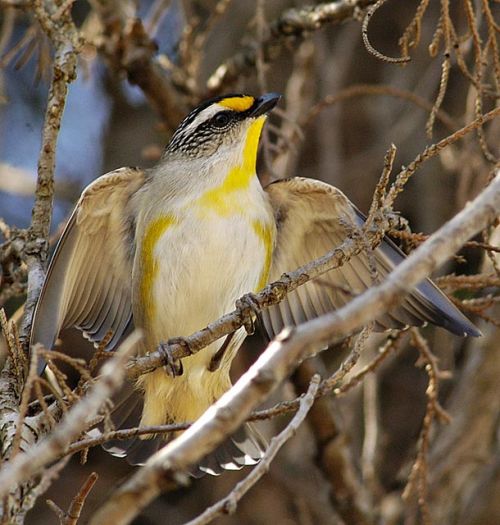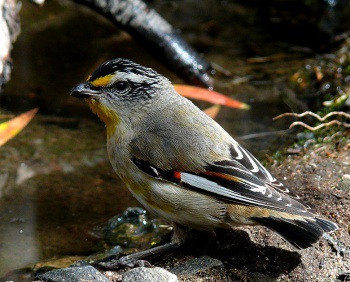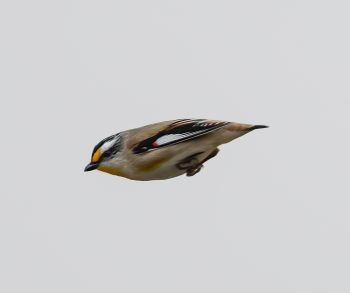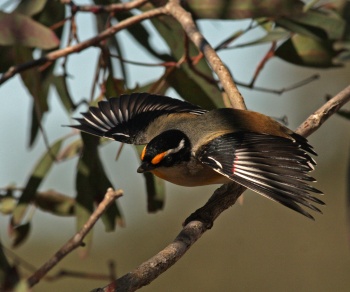- Pardalotus striatus
Identification
9–12 cm (3½-4¾ in); a very variable species
- White eyebrow
- Yellow lores
- Olive-grey upperparts
- White wing stripe
- Black crown
The sexes are similar
Variations
In some populations the wing stripe may be narrow, or wide and the spot at the front end of this stripe may be red or yellow. The crown may or may not have fine white stripes.
Distribution
Taxonomy
Subspecies
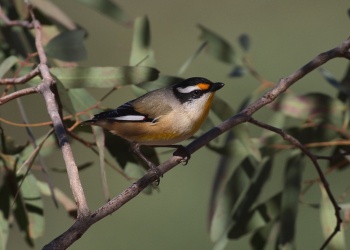
Photo © by Ken Doy
Taromeo, Queensland, Australia, May 2016
Six subspecies are recognized[1]:
- P.s. uropygialis:
- Northern Australia (Fitzroy River, Western Australia to Cape York Peninsula)
- P.s. melvillensis
- Melville and Bathurst islands (Northern Territory)
- P.s. melanocephalus:
- Eastern Queensland (about Ingham to New South Wales)
- P.s. ornatus:
- North-eastern New South Wales to eastern and southern Victoria
- P.s. striatus:
- Tasmania, King and Flinders islands; winters to northern Queensland
- P.s. substriatus:
- Southern and central Australia, except the most arid regions
Habitat
A wide variety of wooded habitats from trees, shrubs, scrub, bushy gardens and especially eucalypt forests.
Behaviour
Diet
They feed in the canopy on a wide variety of insects and their larvae.
Breeding
The nest is usually in a tree hollow or a tunnel in an earthy bank. The clutch consists of 3-5 white eggs, whih are incubated by both adults. The young are fed by both parents, sometimes with the help of other group members.
Vocalisation
Call: huit-huit
References
- Clements, J. F., T. S. Schulenberg, M. J. Iliff, D. Roberson, T. A. Fredericks, B. L. Sullivan, and C. L. Wood. 2015. The eBird/Clements checklist of birds of the world: v2015, with updates to August 2015. Downloaded from http://www.birds.cornell.edu/clementschecklist/download/
- Handbook of the Birds of the World Alive (retrieved September 2015)
- Birds in Backyards
- BF Member observations
Recommended Citation
- BirdForum Opus contributors. (2024) Striated Pardalote. In: BirdForum, the forum for wild birds and birding. Retrieved 29 April 2024 from https://www.birdforum.net/opus/Striated_Pardalote
External Links
GSearch checked for 2020 platform.1




